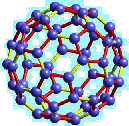Think again, if you’re a small and medium-sized business (SMB) that is holding back on Internet of Things projects until the price of software and components such as sensors came down and the technology is more robust!
INEX Advisors’ IoT Impact LABS, an accelerator program in New Bedford, MA brings together IoT startups, top technology and industrial suppliers such as Analog Devices, Dell, and PTC/ ThingWORX, plus legal and policy experts to use the IoT help innovative, sustainable small and medium-sized businesses in the region in fields such as “smart cities,” food and agriculture, water and maritime, and energy and transportation.
One is particularly noteworthy because it is bringing fishing into the 21st century.
Island Creek Oysters of Duxbury MA, was plagued by the need to do a five-step, paper-based food safety inspection reporting on variables such as water temperature and pH, that had to be recorded precisely during the two-hour window after low tide when it had to harvest the oysters. It’s difficult to do both.
The Mass. Department of Fisheries Management brought together INEX and Island Creek to develop a real-time digital program to both monitor the oysters and do the data collection. Chris Rezendes, partner at Inex Advisors, said the department contacted IoT Impact Labs to figure out a digital traceability program for shellfish farmers in Massachusetts, which includes Island Creek’s farm in Duxbury Mass., just a half-hour south of Boston.
IoT Impact Labs put together a solution to enable monitoring of conditions in real time, wirelessly.
“There are just dozens of instrumentation opportunities. That means dozens of opportunities for sensors, and firmware, and connectivity, and analytics vendors,” Rezendes told CRN.
The project included replacing time-consuming human monitoring of more than 60 water pumps with wireless sensors.
The LABS will release more information about the other projects in coming months, and will host one of our Boston/New England IoT Meetups on February 29 in New Bedford (6 PM, 1213 Purchase Street), with speakers including:
- Dave Wiley, PhD. NOAA, Research Director, Stellwagon National Marine Sanctuary. He has led the development and deployment of sensor buoys and marine mammal tracking, including supporting a recreational marine application based on his team’s work.
- Dave Duquette, Founder and CEO, Littoral Power Systems which recently closed its Seed Round, including a prestigious ARPA-E grant. Their kinetic energy harvesting systems are breaking ground in tidal energy capture.
- Brian Coffey, environmental sensing and instrumentation lead at Analog Devices.


